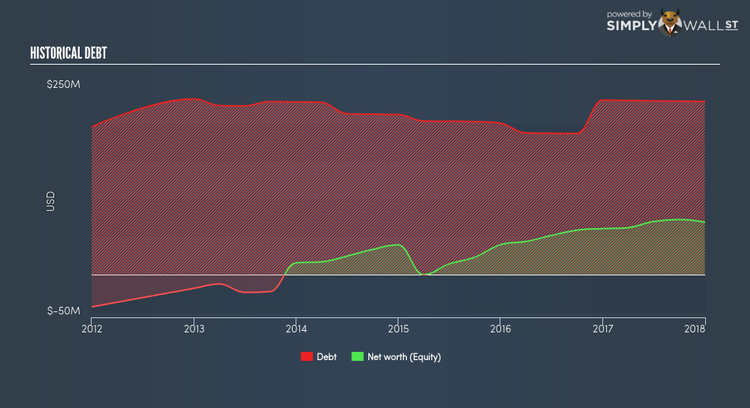RE/MAX Holdings Inc (NYSE:RMAX): Time For A Financial Health Check

RE/MAX Holdings Inc (NYSE:RMAX) is a small-cap stock with a market capitalization of US$1.68B. While investors primarily focus on the growth potential and competitive landscape of the small-cap companies, they end up ignoring a key aspect, which could be the biggest threat to its existence: its financial health. Why is it important? Evaluating financial health as part of your investment thesis is essential, as mismanagement of capital can lead to bankruptcies, which occur at a higher rate for small-caps. Here are few basic financial health checks you should consider before taking the plunge. Though, since I only look at basic financial figures, I suggest you dig deeper yourself into RMAX here.
Does RMAX generate enough cash through operations?
Over the past year, RMAX has maintained its debt levels at around US$228.99M comprising of short- and long-term debt. At this constant level of debt, the current cash and short-term investment levels stands at US$50.81M for investing into the business. On top of this, RMAX has produced cash from operations of US$63.29M in the last twelve months, resulting in an operating cash to total debt ratio of 27.64%, meaning that RMAX’s operating cash is sufficient to cover its debt. This ratio can also be interpreted as a measure of efficiency as an alternative to return on assets. In RMAX’s case, it is able to generate 0.28x cash from its debt capital.
Can RMAX meet its short-term obligations with the cash in hand?
Looking at RMAX’s most recent US$43.56M liabilities, it seems that the business has maintained a safe level of current assets to meet its obligations, with the current ratio last standing at 1.83x. Usually, for Real Estate companies, this is a suitable ratio since there is a bit of a cash buffer without leaving too much capital in a low-return environment.
Does RMAX face the risk of succumbing to its debt-load?
With total debt exceeding equities, RMAX is considered a highly levered company. This is not unusual for small-caps as debt tends to be a cheaper and faster source of funding for some businesses. We can check to see whether RMAX is able to meet its debt obligations by looking at the net interest coverage ratio. A company generating earnings before interest and tax (EBIT) at least three times its net interest payments is considered financially sound. In RMAX’s, case, the ratio of 8.24x suggests that interest is appropriately covered, which means that lenders may be less hesitant to lend out more funding as RMAX’s high interest coverage is seen as responsible and safe practice.
Next Steps:
RMAX’s high cash coverage means that, although its debt levels are high, the company is able to utilise its borrowings efficiently in order to generate cash flow. Since there is also no concerns around RMAX’s liquidity needs, this may be its optimal capital structure for the time being. I admit this is a fairly basic analysis for RMAX’s financial health. Other important fundamentals need to be considered alongside. I suggest you continue to research RE/MAX Holdings to get a better picture of the small-cap by looking at:
Future Outlook: What are well-informed industry analysts predicting for RMAX’s future growth? Take a look at our free research report of analyst consensus for RMAX’s outlook.
Valuation: What is RMAX worth today? Is the stock undervalued, even when its growth outlook is factored into its intrinsic value? The intrinsic value infographic in our free research report helps visualize whether RMAX is currently mispriced by the market.
Other High-Performing Stocks: Are there other stocks that provide better prospects with proven track records? Explore our free list of these great stocks here.
To help readers see pass the short term volatility of the financial market, we aim to bring you a long-term focused research analysis purely driven by fundamental data. Note that our analysis does not factor in the latest price sensitive company announcements.
The author is an independent contributor and at the time of publication had no position in the stocks mentioned.

